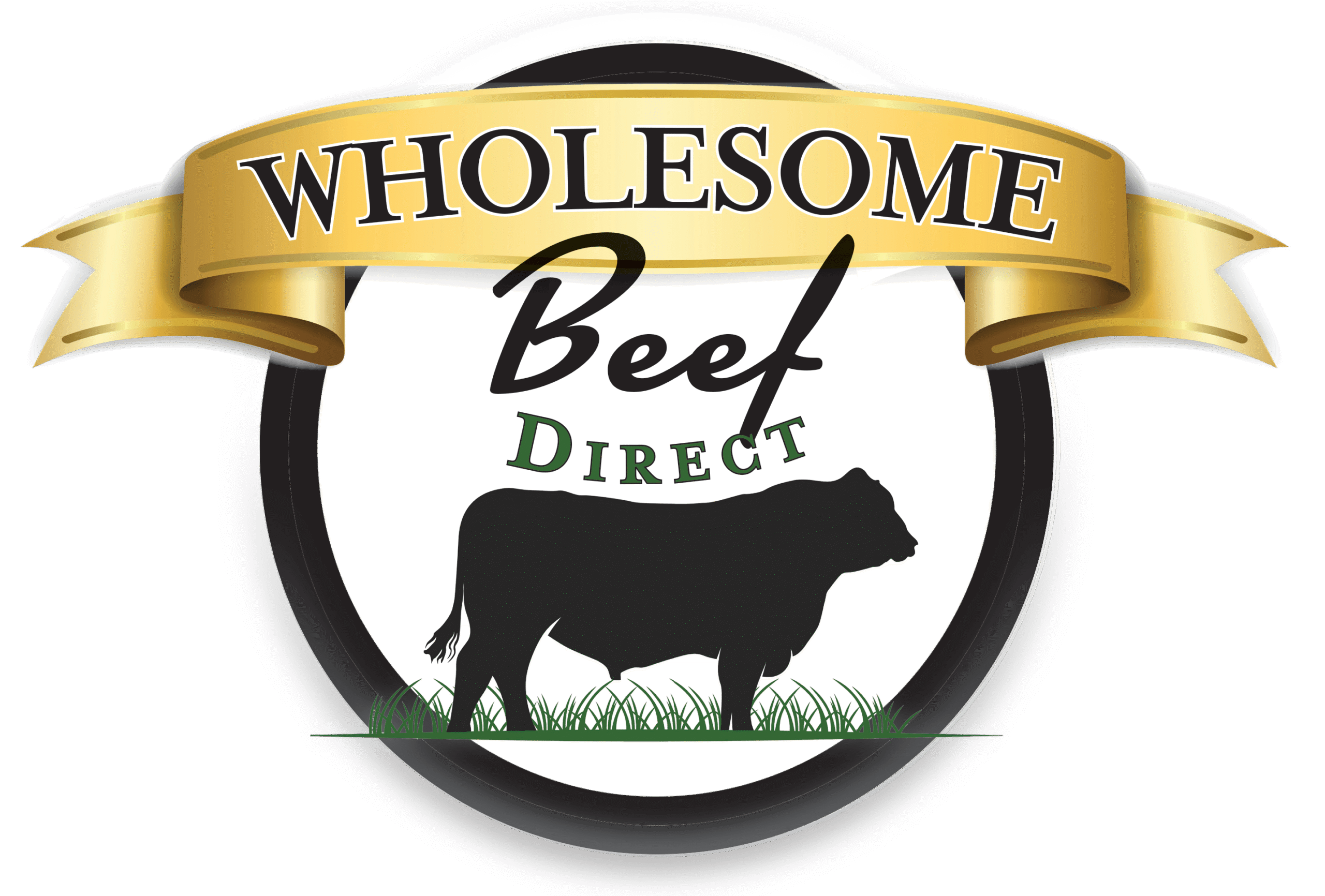There’s a lot to know about buying freezer beef. We’re here to guide you through the process…

How much beef can I expect to get off my animal?
An WBD animal that is ready for processing typically weighs approximately 1,300 pounds “on the hoof”. There is usually about 60% of the animal that is considered “waste”, like bones, hide, head, tail, hooves, organs, etc. So you’ll end up with approximately 500 pounds of frozen packaged meat. A typical breakdown of the cuts available from your animal looks something like this***:
185# Burger
80# Round Roast & Steak
85# Chuck Roast & Steak
75# Rib & Loin Steak
40# Other Cuts (flank etc.)
How much freezer space will I need?
Typically, you will need approximately 18 cubic feet of freezer space for a whole beef. Thus, a half a beef will require 9.0 cu. ft., and a quarter will need 4.5 cu. ft.
For a mental comparison, a whole pork usually requires about 7.0 cubic feet, and a whole lamb needs about 5.5 cubic feet of freezer space.
If you don’t have room to store your meat, we offer affordable storage options for part or all of your beef in our on-site frozen storage facility. When you are ready, we will ship your meat to you as you need it. Contact us today to reserve your storage space and inquire about monthly or weekly rates.

Can I Give WBD Beef as a Gift?
Absolutely. We are happy to help accommodate your gifting needs.
We also offer gift cards to easily give a gift you know they will love.
Give us a call or email us anytime and we can help you through the process!
How long does it take to get beef after I order it?
The short answer is: it depends. We have animals at varying stages of finishing here on the ranch at different times. Because beef is at its best quality at certain weights, we won’t schedule processing until we know we’ll have an animal ready. Also, most processors are booking out several months ahead. It may be several months before you can have your beef delivered to you. Sometimes, though, we might get lucky and have an unexpected opening at a butcher shop. If so, we will notify our customer base, and provide an estimated delivery window.
Typically, once a beef is delivered to the butcher it takes from 14-21 days to process the animal. Delivery arrangements will be made with you accordingly.
We do have pre-packaged small cuts available, check out our store page to see what is ready to head out the door!
Can I buy just hamburger?
Yes. Sometimes an animal that is less tender than a typical butcher animal would be better suited for hamburger only, as the steaks and roasts would be tougher than most people prefer. If you’re interested in burger only, or would like to buy a 25 lb. box of hamburger in 1, 1.5 or 2lb packages, please contact us, or add it to your order on the order page.
What cuts do I get when I order a quarter of a beef? *Hint: It’s a little different than for a half or whole.
Halves and quarters are sold as half or a quarter of all the meat, rather than the front quarter or back
quarter. Still, it can be difficult to customize cutting orders by the quarter, so you may have to be slightly flexible when buying only a quarter and understand you may not be able to have some of every section of the beef.
Can I get some of the organs or bones?
If you’re interested in receiving the heart, liver, tail or tongue, let us know. Or maybe you’re looking for soup bones as a treat for your pets. We can arrange this with the butcher when it is delivered to them and can get you a cost. We may also have some on hand in frozen storage, but it’s best to let us know ahead of delivery to the processor.
What is the difference between grass-fed and grain- or corn-fed?
Grass-fed animals are typically fed a diet of strictly grass and hay or silage for their entire lives. Grass-fed beef is usually leaner (i.e., less marbling) but often has to be fed longer to reach finish-weight. Sometimes they are butchered at a smaller size than their grain- or corn-fed counterparts.
Grain-fed animals are usually raised on grass and hay, then fed distiller’s grains, barley, oats or wheat rations to add fat and marbling to the meat.
Corn-fed animals are fed a similar mixture that would obviously include a high percentage of corn.
The choice between grass-fed, grain-fed, or corn-fed beef is a matter of preference, availability, and price.
How are the Wholesome Beef Direct animals grown?
The animals sold through WBD are grown at Kimmel Ranch in Turner, Montana and are pasture raised on prairie rangeland, dryland forage fields and cover crop fields that include a variety of grazing plants that may include brassicas, oats, sunflowers, sorghum, millet, vetch, barley, triticale, and more. These cattle are not kept in confinement but live out in open pastures unless the weather becomes too inclement and they are temporarily moved into areas to protect them from the often brutal Montana winters. If conditions require, sometimes cattle may be supplemented with custom feed blends to help meet nutritional requirements the animals may need. We feel cattle health is top priority in developing a good end-product.
We invite you to visit the Kimmel Ranch and see for yourself or check out the Kimmel Ranch YouTube channel https://www.youtube.com/channel/UCJGSOdyfCBpZ0lpII102Nhg to watch this in action. It’s a great thing to be a cow in Montana in the summer!
I’m not sure how to use some of these cuts. What do I do with them?
See our recipes section for a variety of ways to cook your amazing beef.
We also recommend this site for the best ways to use beef: https://www.beefitswhatsfordinner.com.
